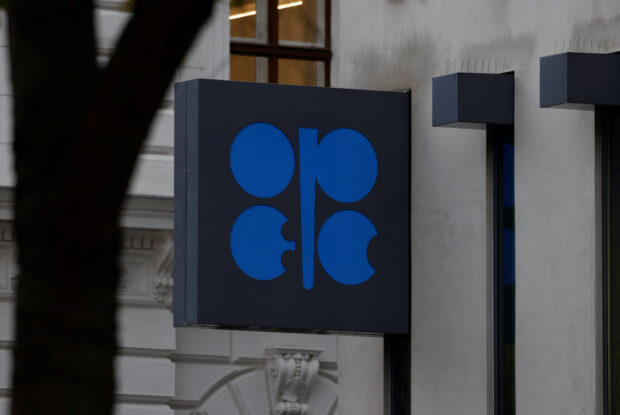
A view of the logo of the Organization of the Petroleum Exporting Countries (OPEC) outside their headquarters in Vienna, Austria, Nov 30, 2023. REUTERS/Leonhard Foeger/File photo
LONDON/MOSCOW/DUBAI — A meeting of top OPEC+ ministers kept oil supply policy unchanged and pressed some countries to increase compliance with output cuts, a decision that spurred international crude prices to their highest in five months at nearly $90 a barrel.
A ministerial committee (JMMC) of the Organization of the Petroleum Exporting Countries and allies led by Russia, known as OPEC+, met online on Wednesday to review the market and members’ implementation of output cuts.
The JMMC brings together leading OPEC+ producers including Saudi Arabia, Russia and the United Arab Emirates.
Oil has rallied this year, driven by tighter supply, attacks on Russian energy infrastructure and war in the Middle East. Brent crude settled on Wednesday at its highest level since October at $89.35 a barrel.
READ: Oil settles at five-month high, gains capped by jump in US stocks
“OPEC+ decided to stick with oil supply cuts for the first half of the year, keeping global markets tight and potentially sending prices higher,” said Saxo Bank’s Ole Hansen.
OPEC+ members, led by Saudi Arabia and Russia, last month agreed to extend voluntary output cuts of 2.2 million barrels per day (bpd) until the end of June to support the market.
Iran, Kazakhstan vow full conformity
In a statement following Wednesday’s meeting, OPEC+ said some countries had promised to improve their adherence to targets.
READ: OPEC+ producers extend oil output cuts to second quarter
The panel welcomed pledges from Iraq and Kazakhstan to achieve full conformity as well as to compensate for overproduction, and Russia’s announcement that its cuts in the second quarter will be based on production not exports, the statement said.
“Participating countries with outstanding overproduced volumes for the months of January, February and March 2024 will submit their detailed compensation plans to the OPEC Secretariat by 30 April 2024,” the statement said.
Russian Deputy Prime Minister Alexander Novak said on Wednesday Russia was in full compliance with its commitments to reduce oil supplies as part of the OPEC+ deal.
Data from S&P Commodity Insights, known as Platts, showed the group overproduced by a net 275,000 bpd in January and by 175,000 bpd in February. Platts is one of the secondary sources used by OPEC+ to assess its members’ production.
Gabon, Iraq and Kazakhstan were the main members that produced above their quotas for the two months, the survey said.
Iraq last month promised to lower exports to make up for pumping above its OPEC target, a pledge that would cut shipments by 130,000 bpd from February.
When the voluntary curbs expire at the end of June, the total cuts by OPEC+ are set to decline to 3.66 million bpd as agreed in earlier steps starting in 2022.
The panel scheduled its next meeting for June 1, the same day as the next full OPEC+ meeting to decide policy.